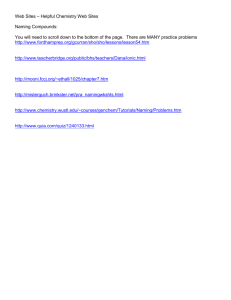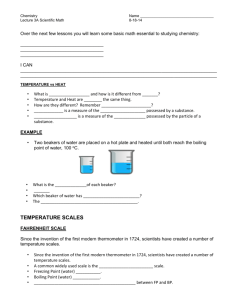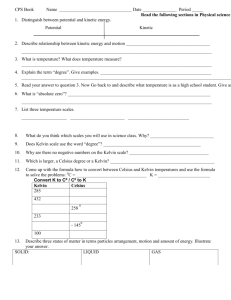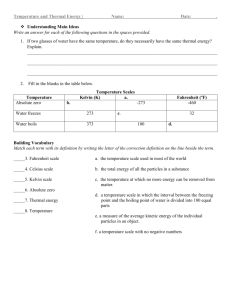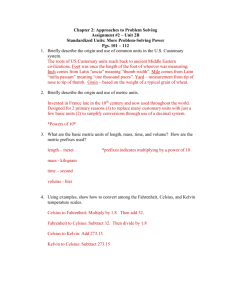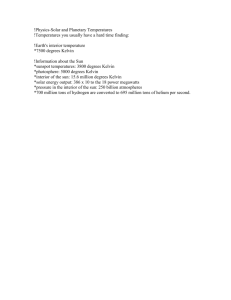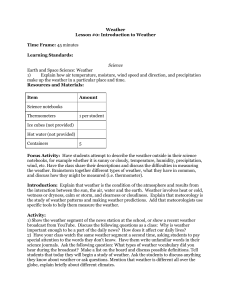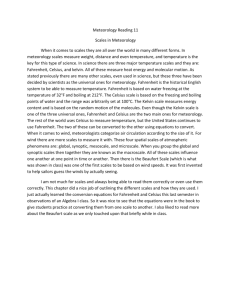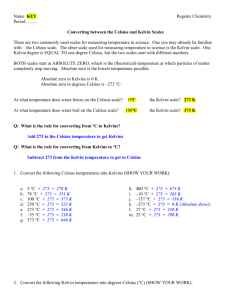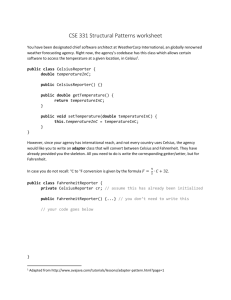Temperature Conversions - Dordt College Homepages
advertisement
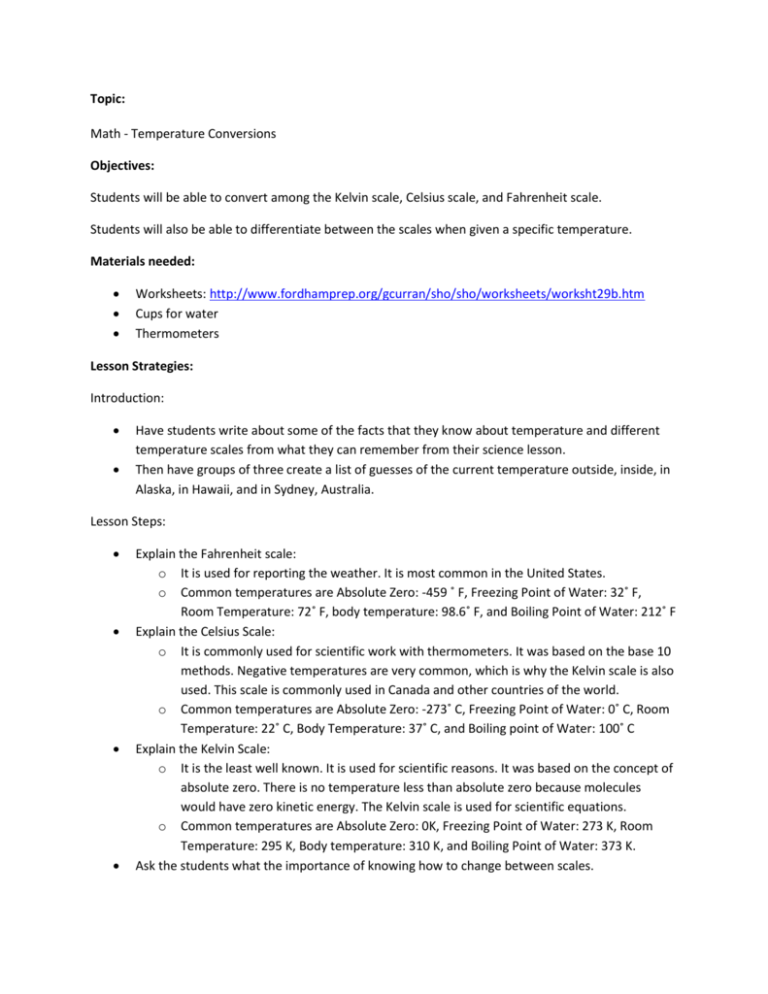
Topic: Math - Temperature Conversions Objectives: Students will be able to convert among the Kelvin scale, Celsius scale, and Fahrenheit scale. Students will also be able to differentiate between the scales when given a specific temperature. Materials needed: Worksheets: http://www.fordhamprep.org/gcurran/sho/sho/worksheets/worksht29b.htm Cups for water Thermometers Lesson Strategies: Introduction: Have students write about some of the facts that they know about temperature and different temperature scales from what they can remember from their science lesson. Then have groups of three create a list of guesses of the current temperature outside, inside, in Alaska, in Hawaii, and in Sydney, Australia. Lesson Steps: Explain the Fahrenheit scale: o It is used for reporting the weather. It is most common in the United States. o Common temperatures are Absolute Zero: -459 ˚ F, Freezing Point of Water: 32˚ F, Room Temperature: 72˚ F, body temperature: 98.6˚ F, and Boiling Point of Water: 212˚ F Explain the Celsius Scale: o It is commonly used for scientific work with thermometers. It was based on the base 10 methods. Negative temperatures are very common, which is why the Kelvin scale is also used. This scale is commonly used in Canada and other countries of the world. o Common temperatures are Absolute Zero: -273˚ C, Freezing Point of Water: 0˚ C, Room Temperature: 22˚ C, Body Temperature: 37˚ C, and Boiling point of Water: 100˚ C Explain the Kelvin Scale: o It is the least well known. It is used for scientific reasons. It was based on the concept of absolute zero. There is no temperature less than absolute zero because molecules would have zero kinetic energy. The Kelvin scale is used for scientific equations. o Common temperatures are Absolute Zero: 0K, Freezing Point of Water: 273 K, Room Temperature: 295 K, Body temperature: 310 K, and Boiling Point of Water: 373 K. Ask the students what the importance of knowing how to change between scales. o Some answers should include knowing the weather outside or around the world, or in laboratory work. Show the students this table for all known conversions. Figure 2-9b Temperature Conversion Formulas Conversion Celsius to Kelvin Formula K = C + 273 Example 21oC = 294 K Kelvin to Celsius C = K – 273 313 K = 40 oC Fahrenheit to Celsius C = (F - 32) x 5/9 89 oF = 31.7 oC Celsius to Fahrenheit F = (C x 9/5) + 32 50 oC = 122 oF Work through the examples with the students. Give them only the first number, and work through the conversion to get the second number. Have students get back into their groups and work through their guesses of temperature. Have them change ˚F to ˚C, then from ˚C to K. As a class, record the temperature of three different glasses of water in ˚C. One should be ice water, lukewarm water, and hot water. Have students change the degrees of each to Fahrenheit and Kelvin. Closure Give them different temperatures from places around the world and have them guess if the weather forecast was given in ˚F, ˚C, or K. o Hong Kong China = 81(˚F) o Las Vegas = 20(˚C) o Vienna, Austria = 286 (K) o Mexico City = 24 (˚C) o Jerusalem = 79 (˚F) o Sioux Center, IA = 27 (˚F) Assignment: Students should fill out this worksheet: http://www.fordhamprep.org/gcurran/sho/sho/worksheets/worksht29b.htm Other worksheets or quizzes are available at this website if needed: http://www.fordhamprep.org/gcurran/sho/sho/lessons/lesson29.htm Evaluation: Students will demonstrate ability to convert among scales through in-class participation and the completion of the worksheets. In-class participation is also important in evaluation of understanding differences of the scales and being able to differentiate between the scales.
![Temperature Notes [9/22/2015]](http://s3.studylib.net/store/data/006907012_1-3fc2d93efdacd086a05519765259a482-300x300.png)
